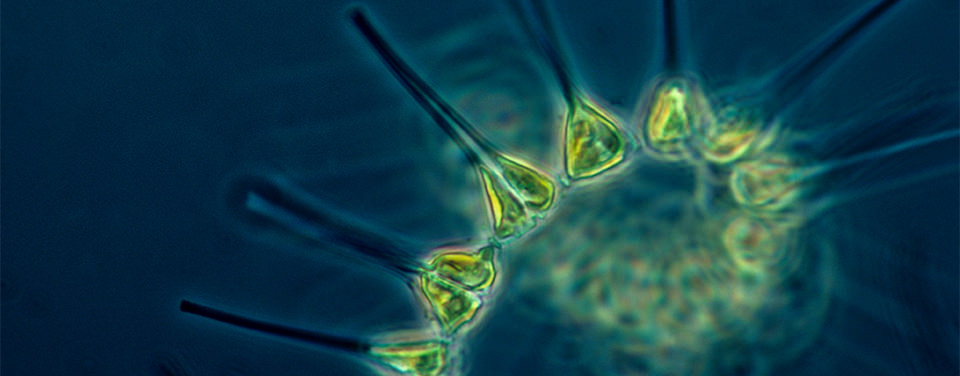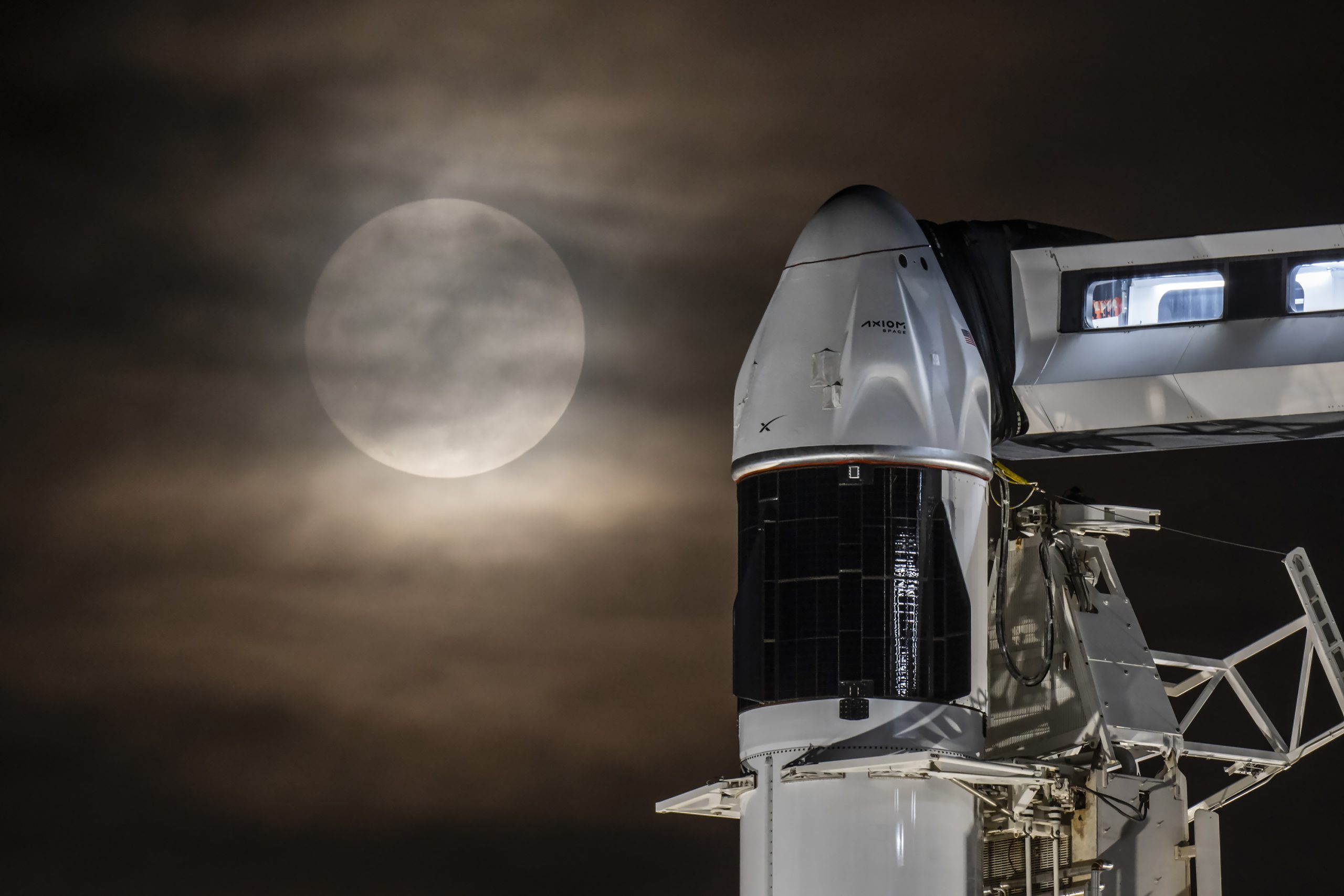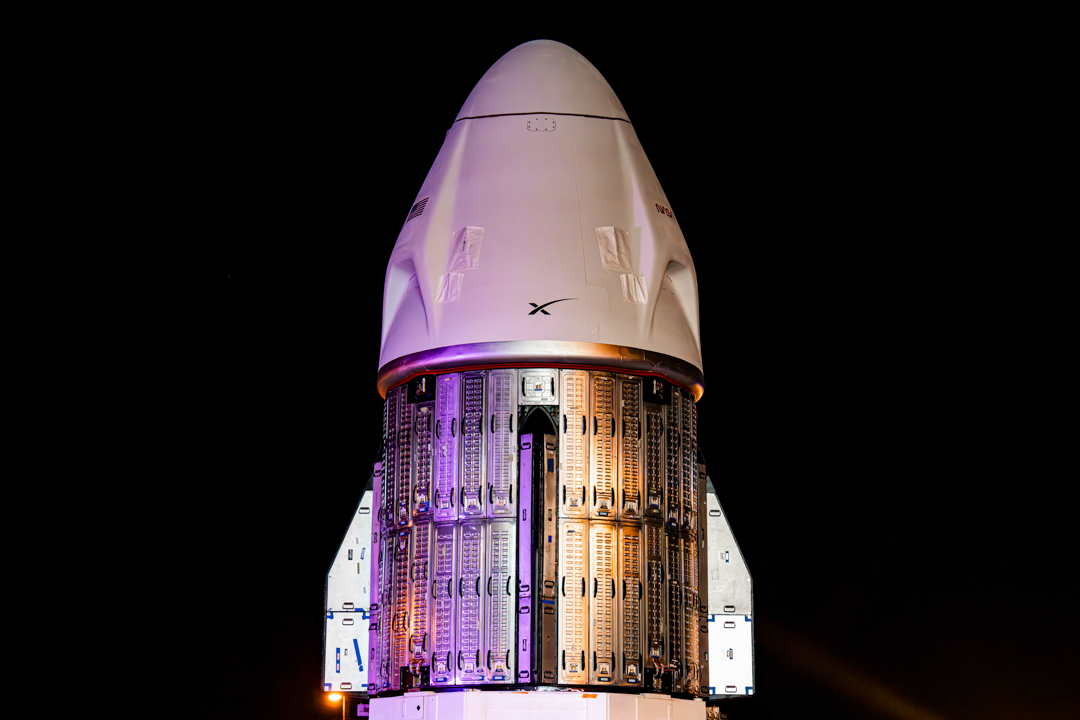

Space
SpaceX wins NASA contract to launch Earth Observing System, but current administration has other plans
SpaceX recently snagged an $80.4 million NASA contract to launch an upcoming Earth-observing satellite sometime in 2022. That is, if the mission isn’t scrapped due to budgetary issues.
A used Falcon 9 rocket is slated to ferry the 3,748-lb. (1,700 kg) Plankton, Aerosol, Cloud, and ocean Ecosystem satellite (aka PACE) to orbit sometime in December 2022. The mission, which provides data on oceans and particles in the atmosphere, is expected to launch from Cape Canaveral Air Force Station in Florida.
Its goal: to help us better understand our home planet. SpaceX is expanding its portfolio, after receiving certification for science launches in 2016. To date, SpaceX launched a bevy of scientific satellites including Jason-3 in 2106, the Transiting Exoplanet Survey Satellite (TESS) and GRACE-FO missions in 2018, and the upcoming Sentinel 6A in Nov. 2020.
But it’s been a tough journey for PACE. The satellite has been on the chopping block several times, but managed to avoid getting the ax so far.
That’s because the Trump administration has tried to cancel the ocean-watching mission three separate times now, in an effort to reduce the Earth science budget. Each time the president has tried to cut its funding, Congress voted to support it, including authorizing $131 million for the mission in December 2019.
So NASA has moved ahead with the development of the mission, and selected SpaceX as the launch provider on Feb. 4.
“SpaceX is honored to continue supporting NASA’s critical scientific observational missions by launching PACE, which will help humanity better understand, protect and preserve our planet,” Gwynne Shotwell, SpaceX’s president and chief operating officer, said in a company statement.
PACE will focus on our planet’s oceans, the clouds, and aerosols (small air particles) in an effort to better understand phytoplankton — tiny plant-like organisms in the ocean that are the base of the food chain. These organisms can tell us a lot about how climate change is affecting the environment.
“PACE will help scientists investigate the diversity of organisms fueling marine food webs and the U.S. economy, and deliver advanced data products to reduce uncertainties in global climate models and improve our interdisciplinary understanding of the Earth system,” NASA said in a statement.
“It will also continue systematic records of key atmospheric variables associated with air quality and Earth’s climate,” officials wrote on the PACE mission’s website.
Like most plants, phytoplankton relies on chlorophyll to capture sunlight, and then using photosynthesis to turn it into chemical energy, releasing oxygen as a byproduct.

Phytoplankton are a diverse variety of species and their growth depends on the availability of things like carbon dioxide, sunlight, and nutrients. Just like their terrestrial counterparts, phytoplankton require can nutrients such as nitrate, phosphate, silicate, and calcium, depending on the species.
Other factors that influence growth rates are water temperature and salinity, water depth, wind, as well as what sort of predators are nearby.
When conditions are just right, phytoplankton populations can grow explosively, a phenomenon we call a bloom. Blooms in the ocean may cover hundreds of square kilometers and are easily spotted in satellite imagery. A bloom may last several weeks, although the life expectancy of any individual organism is rarely more than a few days.
Phytoplankton are important because they are the foundation of the aquatic food web, feeding many different creatures from other microscopic organisms to enormous, mega-ton whales.
Phytoplankton aren’t always a good thing — certain species are known to produce powerful biotoxins, like the red tide. These toxic blooms can kill marine life and ultimately people if they accidentally eat contaminated seafood or by inhaling the organisms.

PACE’s primary tool is called the Ocean Color Instrument (OCI). It will measure the color of the ocean in a broad range of wavelengths, from ultraviolet to shortwave infrared, according to NASA. The satellite will observe the Earth from an orbital perch about 420 miles (675 kilometers) above the planet. (For reference, the space station orbits at 250 miles or 400 km up.)
“The color of the ocean is determined by the interaction of sunlight with substances or particles present in seawater, such as chlorophyll, a green pigment found in most phytoplankton species,” according to the mission’s website. “By monitoring global phytoplankton distribution and abundance with unprecedented detail, the OCI will help us to better understand the complex systems that drive ocean ecology.”
PACE will be in a sun-synchronous orbit, which will allow for consistent daylight conditions for imaging. This makes it easier for scientists to compare different regions and the same regions over long periods of time — if the satellite makes it to orbit.
Today, the president released his budget request for 2021, and once again, PACE is one of two Earth science missions he wants to cancel. Will its luck hold out? Will Congress vote to approve funding for the vital satellite despite the president’s suggestion? Only time will tell.
But with many coastal states recently suffering from red tide, this satellite will be a valuable tool in scientists’ arsenal to help them better understand these tiny organisms.
News
SpaceX Ax-4 Mission prepares for ISS with new launch date
SpaceX, Axiom Space, and NASA set new launch date for the Ax-4 mission after addressing ISS & rocket concerns.

SpaceX is preparing for a new launch date for the Ax-4 mission to the International Space Station (ISS).
SpaceX, Axiom Space, and NASA addressed recent technical challenges and announced a new launch date of no earlier than Thursday, June 19, for the Ax-4 mission. The delay from June 12 allowed teams to assess repairs to small leaks in the ISS’s Zvezda service module.
NASA and Roscosmos have been monitoring leaks in the Zvezda module’s aft (back) segment for years. However, stable pressure could also result from air flowing across the hatch seal from the central station. As NASA and its partners adapt launch schedules to ensure station safety, adjustments are routine.
“Following the most recent repair, pressure in the transfer tunnel has been stable,” a source noted, suggesting the leaks may be sealed.
“By changing pressure in the transfer tunnel and monitoring over time, teams are evaluating the condition of the transfer tunnel and the hatch seal between the space station and the back of Zvezda,” the source added.
SpaceX has also resolved a liquid oxygen leak found during post-static fire inspections of the Falcon 9 rocket, completing a wet dress rehearsal to confirm readiness. The Ax-4 mission is Axiom Space’s fourth private astronaut trip to the ISS. It will launch from NASA’s Kennedy Space Center in Florida on a Falcon 9 rocket with a new Crew Dragon capsule.
“This is the first flight for this Dragon capsule, and it’s carrying an international crew—a perfect debut. We’ve upgraded storage, propulsion components, and the seat lash design for improved reliability and reuse,” said William Gerstenmaier, SpaceX’s vice president of build and flight reliability.
The Ax-4 mission crew is led by Peggy Whitson, Axiom Space’s director of human spaceflight and former NASA astronaut. The Ax-4 crew includes ISRO astronaut Shubhanshu Shukla as pilot, alongside mission specialists Sławosz Uznański-Wiśniewski from Poland and Tibor Kapu from Hungary. The international team underscores Axiom’s commitment to global collaboration.
The Ax-4 mission will advance scientific research during its ISS stay, supporting Axiom’s goal of building a commercial space station. As teams finalize preparations, the mission’s updated launch date and technical resolutions position it to strengthen private space exploration’s role in advancing space-based innovation.
News
Starlink India launch gains traction with telecom license approval
Starlink just secured its telecom license in India! High-speed satellite internet could go live in 2 months.

Starlink India’s launch cleared a key regulatory hurdle after securing a long-awaited license from the country’s telecom ministry. Starlink’s license approval in India paves the way for commercial operations to begin, marking a significant milestone after a three-year wait.
The Department of Telecommunications granted Starlink a Global Mobile Personal Communication by Satellite (GMPCS) license, enabling it to roll out its high-speed internet service. Local reports hinted that Starlink plans to launch its services within the next two months. Starlink India’s services are expected to be priced at ₹3,000 per month for unlimited data. Starlink service would require a ₹33,000 hardware kit, including a dish and router.
“Starlink is finally ready to enter the Indian market,” sources familiar with the rollout plans confirmed, noting a one-month free trial for new users.
Starlink’s low-Earth orbit satellite network promises low-latency, high-speed internet that is ideal for rural India, border areas, and hilly terrains. With over 7,000 satellites in orbit and millions of global users, Starlink aims to bridge India’s digital divide, especially in areas with limited traditional broadband.
Starlink has forged distribution partnerships with Indian telecom giants Reliance Jio and Bharti Airtel to streamline deployment and retail logistics. However, the company still awaits spectrum allocation and final clearances from India’s space regulator, IN-SPACe, and national security agencies before its full launch, expected before August 2025.
India’s satellite internet market is becoming increasingly competitive, with Starlink joining rivals like OneWeb and Jio Satellite Communications. While Starlink positions itself as a premium offering, its entry has sparked debate among domestic telecom operators over spectrum pricing.
Local reports noted that other players in the industry have raised concerns over the lower regulatory fees proposed for satellite firms compared to terrestrial operators, highlighting tensions in the sector.
Starlink India’s launch represents a transformative step toward expanding internet access in one of the world’s largest markets. Starlink could redefine connectivity for millions in underserved regions by leveraging its advanced satellite technology and strategic partnerships. As the company navigates remaining regulatory steps, its timely rollout could set a new standard for satellite internet in India, intensifying competition and driving innovation in the telecom landscape.
Elon Musk
SpaceX to decommission Dragon spacecraft in response to Pres. Trump war of words with Elon Musk
Elon Musk says SpaceX will decommission Dragon as a result of President Trump’s threat to end his subsidies and government contracts.

SpaceX will decommission its Dragon spacecraft in response to the intense war of words that President Trump and CEO Elon Musk have entered on various social media platforms today.
President Trump and Musk, who was once considered a right-hand man to Trump, have entered a vicious war of words on Thursday. The issues stem from Musk’s disagreement with the “Big Beautiful Bill,” which will increase the U.S. federal deficit, the Tesla and SpaceX frontman says.
How Tesla could benefit from the ‘Big Beautiful Bill’ that axes EV subsidies
The insults and threats have been brutal, as Trump has said he doesn’t know if he’ll respect Musk again, and Musk has even stated that the President would not have won the election in November if it were not for him.
President Trump then said later in the day that:
“The easiest way to save money in our Budget, Billions and Billions of Dollars, is to terminate Elon’s Government Subsidies and Contracts. I was always surprised that Biden didn’t do it!”
Musk’s response was simple: he will decommission the SpaceX capsule responsible for transporting crew and cargo to the International Space Station (ISS): Dragon.
🚨 Elon says Dragon will be decommissioned immediately due to President Trump’s threats to terminate SpaceX’s government contracts https://t.co/XNB0LflZIy
— TESLARATI (@Teslarati) June 5, 2025
Dragon has completed 51 missions, 46 of which have been to the ISS. It is capable of carrying up to 7 passengers to and from Earth’s orbit. It is the only spacecraft that is capable of returning vast amounts of cargo to Earth. It is also the first private spacecraft to take humans to the ISS.
The most notable mission Dragon completed is one of its most recent, as SpaceX brought NASA astronauts Butch Wilmore and Suni Williams back to Earth after being stranded at the ISS by a Boeing Starliner capsule.
SpaceX’s reluctance to participate in federally funded projects may put the government in a strange position. It will look to bring Boeing back in to take a majority of these projects, but there might be some reluctance based on the Starliner mishap with Wilmore and Williams.
SpaceX bails out Boeing and employees are reportedly ‘humiliated’
-

 Elon Musk2 weeks ago
Elon Musk2 weeks agoTesla investors will be shocked by Jim Cramer’s latest assessment
-

 Elon Musk2 days ago
Elon Musk2 days agoxAI launches Grok 4 with new $300/month SuperGrok Heavy subscription
-

 Elon Musk4 days ago
Elon Musk4 days agoElon Musk confirms Grok 4 launch on July 9 with livestream event
-

 News1 week ago
News1 week agoTesla Model 3 ranks as the safest new car in Europe for 2025, per Euro NCAP tests
-

 Elon Musk2 weeks ago
Elon Musk2 weeks agoA Tesla just delivered itself to a customer autonomously, Elon Musk confirms
-

 Elon Musk1 week ago
Elon Musk1 week agoxAI’s Memphis data center receives air permit despite community criticism
-

 News2 weeks ago
News2 weeks agoXiaomi CEO congratulates Tesla on first FSD delivery: “We have to continue learning!”
-

 Elon Musk2 weeks ago
Elon Musk2 weeks agoTesla scrambles after Musk sidekick exit, CEO takes over sales

















